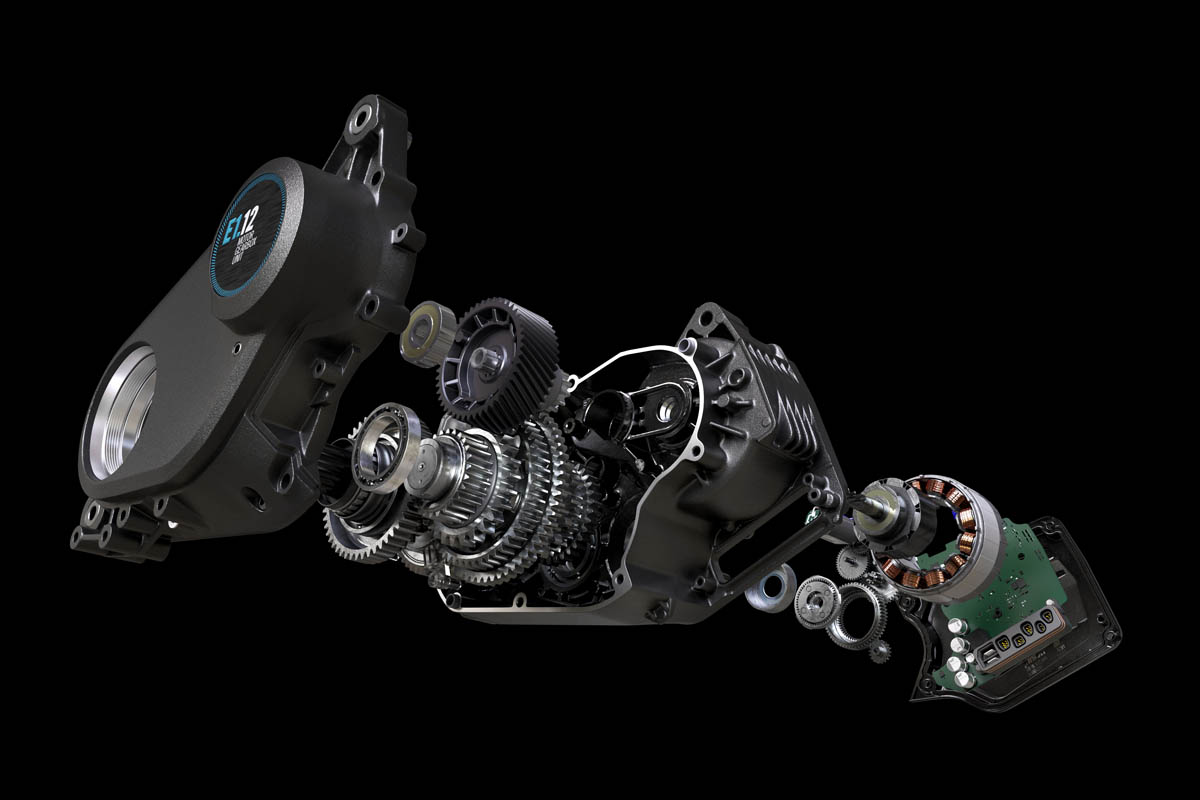Breaking Down the Cost: How Much are E Bikes?
Breaking Down the Cost: How Much are E Bikes? It's hard to ignore the rising popularity of electric bikes, or ebikes. A greener and more economical option than traditional vehicles, ebikes are becoming an appealing choice for many. However, a common question that universally comes up for everyone when diving into the topics of ebikes - how much are e bikes? Today, we're going to break down the cost of eBikes to give you a better understanding of what you might expect to pay. The Wide Price Range of E Bikes Ebikes come with a vast array of prices, greatly influenced by various factors such as the brand, the bike's specifications, and the quality of its components. At the lower end of the spectrum, budget-friendly eBikes can be found for as little as $500. However, these entry-level options often compromise on certain aspects like integrity of components, lower speeds, and shorter battery life. If top-of-the-line features and the best components are what you seek, you'll find eBikes on the market that can reach $5,000. These premium models like QuietKat’s line offers boast superior components, durable and long-life batteries, and cutting-edge technologies like GPS tracking, VPO Technology, and impressive speed capabilities. That being said, the average cost of low end model eBikes tends to hover between the $500 and $1,500 mark. For the mid-range models, the average cost is closer to $3,000. This mid-range price point often provides a good balance of affordability and quality, catering to a wide variety of users with diverse needs. Therefore, when pondering over 'how much are eBikes', keep in mind that the answer can vary dramatically based on your specific requirements and the features you desire in your eBike. Factors Influencing the Price of Ebikes The cost of eBikes can be significantly impacted by numerous elements. Branding plays a major role in pricing; well-established and reputable brands generally command higher prices due to their commitment to superior quality and dependable performance. The type of eBike you choose also contributes to the overall cost. For example, an off road eBike engineered to navigate tough terrains would typically cost more than a basic city eBike designed for everyday commuting. This is due to the fact that off road and all terrain electric bikes require stronger frames, more powerful motors, and quality components that won’t break down when you’re 20 miles from your vehicle in the backcountry. Additional components and features further factor into the price. The kind of motor and battery the eBike utilizes, for instance, can alter the price point. High-quality motors and long-lasting batteries usually come with a higher price tag. Similarly, an eBike's range - the distance it can travel on a single charge - can impact the price, with longer-range eBikes generally being more expensive. Lastly, eBikes equipped with extra features such as integrated lighting systems, cargo racks, or advanced electronic capabilities often have a higher price. These add-ons not only enhance your biking experience but also contribute to the safety and utility of the eBike. Understanding these factors can help you decipher eBike prices and make a more informed decision when purchasing one. Keep in mind that cost shouldn't be the only deciding factor. Balancing your budget with your needs, preferences, and the intended use of the eBike will help ensure that you make a worthwhile investment. Cost of Ebike Maintenance When evaluating the overall expenditure associated with eBikes, one should not overlook the aspect of ebike maintenance. Like any other mode of transportation, eBikes require consistent care to ensure optimum performance. Yet, with eBikes, maintenance goes beyond the typical bicycle servicing, as their electrical components may occasionally demand repairs or even replacements. You could anticipate common upkeep costs to revolve around replacing tires, addressing brake issues, and changing the battery. These maintenance expenses are a crucial part of the 'how much are e bikes' equation and could potentially add up over time. To provide a ballpark figure, an eBike owner might spend somewhere between $100 to $200 annually on upkeep. However, this estimate largely depends on the usage frequency of your eBike. The importance of regular maintenance cannot be overstated as it can prolong the life of your eBike and provide a better riding experience. It's also worth noting that some high-end eBikes might have higher maintenance costs due to their advanced components and features. On the other hand, budget-friendly models might be easier and cheaper to maintain, but they may require more frequent servicing that leads to cost and stress issues from the unreliablity of the cheaper ebikes. Therefore, it's essential to factor in these maintenance costs while considering the purchase of an eBike, and not just the initial buying price. Besides, consider the availability and cost of replacement p

Breaking Down the Cost: How Much are E Bikes?

It's hard to ignore the rising popularity of electric bikes, or ebikes. A greener and more economical option than traditional vehicles, ebikes are becoming an appealing choice for many. However, a common question that universally comes up for everyone when diving into the topics of ebikes - how much are e bikes? Today, we're going to break down the cost of eBikes to give you a better understanding of what you might expect to pay.
The Wide Price Range of E Bikes
Ebikes come with a vast array of prices, greatly influenced by various factors such as the brand, the bike's specifications, and the quality of its components. At the lower end of the spectrum, budget-friendly eBikes can be found for as little as $500. However, these entry-level options often compromise on certain aspects like integrity of components, lower speeds, and shorter battery life.
If top-of-the-line features and the best components are what you seek, you'll find eBikes on the market that can reach $5,000. These premium models like QuietKat’s line offers boast superior components, durable and long-life batteries, and cutting-edge technologies like GPS tracking, VPO Technology, and impressive speed capabilities.
That being said, the average cost of low end model eBikes tends to hover between the $500 and $1,500 mark. For the mid-range models, the average cost is closer to $3,000. This mid-range price point often provides a good balance of affordability and quality, catering to a wide variety of users with diverse needs. Therefore, when pondering over 'how much are eBikes', keep in mind that the answer can vary dramatically based on your specific requirements and the features you desire in your eBike.
Factors Influencing the Price of Ebikes
The cost of eBikes can be significantly impacted by numerous elements. Branding plays a major role in pricing; well-established and reputable brands generally command higher prices due to their commitment to superior quality and dependable performance.
The type of eBike you choose also contributes to the overall cost. For example, an off road eBike engineered to navigate tough terrains would typically cost more than a basic city eBike designed for everyday commuting. This is due to the fact that off road and all terrain electric bikes require stronger frames, more powerful motors, and quality components that won’t break down when you’re 20 miles from your vehicle in the backcountry.
Additional components and features further factor into the price. The kind of motor and battery the eBike utilizes, for instance, can alter the price point. High-quality motors and long-lasting batteries usually come with a higher price tag. Similarly, an eBike's range - the distance it can travel on a single charge - can impact the price, with longer-range eBikes generally being more expensive.
Lastly, eBikes equipped with extra features such as integrated lighting systems, cargo racks, or advanced electronic capabilities often have a higher price. These add-ons not only enhance your biking experience but also contribute to the safety and utility of the eBike.
Understanding these factors can help you decipher eBike prices and make a more informed decision when purchasing one. Keep in mind that cost shouldn't be the only deciding factor. Balancing your budget with your needs, preferences, and the intended use of the eBike will help ensure that you make a worthwhile investment.
Cost of Ebike Maintenance
When evaluating the overall expenditure associated with eBikes, one should not overlook the aspect of ebike maintenance. Like any other mode of transportation, eBikes require consistent care to ensure optimum performance. Yet, with eBikes, maintenance goes beyond the typical bicycle servicing, as their electrical components may occasionally demand repairs or even replacements.
You could anticipate common upkeep costs to revolve around replacing tires, addressing brake issues, and changing the battery. These maintenance expenses are a crucial part of the 'how much are e bikes' equation and could potentially add up over time. To provide a ballpark figure, an eBike owner might spend somewhere between $100 to $200 annually on upkeep. However, this estimate largely depends on the usage frequency of your eBike.
The importance of regular maintenance cannot be overstated as it can prolong the life of your eBike and provide a better riding experience. It's also worth noting that some high-end eBikes might have higher maintenance costs due to their advanced components and features.
On the other hand, budget-friendly models might be easier and cheaper to maintain, but they may require more frequent servicing that leads to cost and stress issues from the unreliablity of the cheaper ebikes. Therefore, it's essential to factor in these maintenance costs while considering the purchase of an eBike, and not just the initial buying price.
Besides, consider the availability and cost of replacement parts, especially the battery, as it is one of the most vital and expensive components of an eBike. If you're using your eBike regularly for commutes or recreational rides, the battery will wear out faster and need replacement sooner.
Lastly, it's a good idea to learn some basic maintenance skills. This way, you can handle minor repairs yourself and save on professional servicing costs. Remember, maintaining your eBike in top-notch condition not only ensures smooth rides but also helps you avoid hefty repair costs in the long run.
Calculating the Potential Savings of Electric Bikes
It might be easy to balk at the initial price tag of eBikes. Yet, when viewed through the lens of potential savings, the picture starts to look quite different. For starters, using an eBike as your primary mode of short-distance transportation can translate into substantial savings. The costs you typically incur for gas, parking, and vehicle upkeep can be significantly reduced if you switch to an eBike for your day-to-day short distance needs.
An often-overlooked advantage of eBikes is the fact that they don't necessitate the usual costs associated with vehicle ownership. Insurance premiums, registration fees, and license costs don't factor into the eBike ownership equation, making them a more economical choice over time. This can be a game-changer for individuals seeking to minimize their recurring expenses.
Beyond the tangible monetary benefits, it's worth mentioning the time-saving aspect of eBikes. Particularly in congested urban areas, where getting around in a car can be time-consuming due to heavy traffic, eBikes can prove to be a faster and more efficient mode of transportation. Time, after all, is money - the time you save can be better utilized for productive or enjoyable activities.
So, when assessing the cost of an eBike, it's crucial to look beyond the initial investment and take into account the long-term savings. From this perspective, eBikes can be viewed as a financially smart choice for many individuals, particularly those replacing short distance driving with ebike rides. Keep these potential savings in mind as you navigate the process of buying an eBike, as they can significantly offset the upfront costs.
Choosing the Right Ebike for Your Budget
Choosing an eBike that fits within your budget, while also meeting your needs, is an essential step in the buying process. Are you in search of a cost-effective commuting solution? If so, an entry-level eBike could be a suitable match. But, if you have more specialized needs such as requiring an ebike for hunting or off road electric bike, be prepared to consider a pricier model. A higher initial expenditure on a premium eBike can potentially result in lower future maintenance and part replacement expenses, making it a sound investment in the long run.
In essence, your budget should reflect your priorities and the intended use of the eBike. By weighing your requirements against your financial capacity, you can arrive at an eBike choice that aligns with both your budget and lifestyle. Just remember, the question is not solely "how much are eBikes", but also, "how much are you willing to invest for the features and performance you desire?"
Ultimately, the right eBike for you is one that balances cost, quality, and purpose, providing you the best possible value for your investment.
What's Your Reaction?
































































